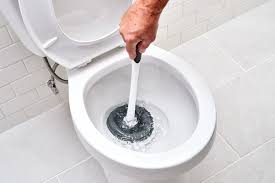If your toilet won’t flush but isn’t clogged, it can be frustrating and confusing. A toilet that doesn’t flush properly can disrupt your daily routine and even lead to bigger plumbing issues if left unresolved. Fortunately, there are several common reasons why this might happen, and many of them can be fixed without calling a plumber. In this article, we’ll explore the possible causes and provide step-by-step solutions to get your toilet working properly again.First, let’s clarify the problem: your toilet isn’t flushing, but there’s no visible clog. This means water isn’t draining properly, or the flush mechanism isn’t working as it should. Here are the most likely culprits:
- Low Water Level in the Tank: If there isn’t enough water in the tank, the toilet won’t have enough force to flush. Check the water level—it should be about an inch below the overflow tube.
- Faulty Flapper: The flapper is the rubber seal that releases water from the tank into the bowl. If it’s worn out or misaligned, it won’t open properly during a flush.
- Broken Lift Chain: The chain connecting the flush handle to the flapper can become disconnected or tangled, preventing the flapper from opening.
- Mineral Buildup in the Rim Jets: Over time, mineral deposits can clog the small holes under the toilet rim, reducing flushing power.
- Issues with the Fill Valve: If the fill valve isn’t working correctly, the tank may not refill properly after flushing.
Now, let’s dive deeper into each of these issues and how to fix them.1. Low Water Level in the TankIf the water level in the tank is too low, the toilet won’t flush effectively. To check the water level, remove the tank lid and look inside. The water should be about an inch below the top of the overflow tube. If it’s lower, adjust the float (either a ball float or a cup-style float) to allow more water into the tank. This is usually done by turning a screw or sliding the float up.2. Faulty FlapperThe flapper is a critical component of the flush mechanism. If it’s damaged or misaligned, water won’t flow into the bowl properly. Inspect the flapper for cracks or warping. If it looks worn out, replace it with a new one—they’re inexpensive and easy to install. Also, make sure the flapper is sealing properly when the tank is full. If it doesn’t close all the way, water will leak into the bowl, reducing flushing power.3. Broken or Tangled Lift Chain
The lift chain connects the flush handle to the flapper. If the chain is too loose, it won’t lift the flapper high enough; if it’s too tight, it can prevent the flapper from sealing. Adjust the chain so there’s just a little slack when the flapper is closed. If the chain is broken, replace it with a new one.4. Mineral Buildup in the Rim JetsThe rim jets are small holes under the toilet rim that direct water into the bowl during a flush. Over time, these can become clogged with mineral deposits, reducing water flow. To clean them, use a wire hanger or a small brush to gently scrub the holes. You can also pour a mixture of vinegar and baking soda into the overflow tube to dissolve the buildup.5. Issues with the Fill ValveThe fill valve controls how much water enters the tank after a flush. If it’s not working correctly, the tank may not refill properly. To test it, flush the toilet and observe the fill valve. If water isn’t flowing into the tank or the valve makes strange noises, it may need to be cleaned or replaced. Most fill valves can be adjusted to control the water level—refer to the manufacturer’s instructions for details.Additional Tips
- Check the Handle: Sometimes, the flush handle itself is loose or broken. Tighten the mounting nut or replace the handle if necessary.
- Inspect the Flush Valve: The flush valve is the large opening at the bottom of the tank. If it’s damaged, water won’t flow into the bowl properly. Replace it if needed.
- Test the Water Pressure: Low water pressure in your home can affect the toilet’s flush. If other fixtures are also affected, contact your water provider.
When to Call a PlumberIf you’ve tried all these solutions and your toilet still won’t flush, it might be time to call a professional. There could be a hidden clog deeper in the pipes, or the issue might be with the sewer line. A plumber can diagnose and fix the problem quickly.ConclusionA toilet that won’t flush but isn’t clogged is usually caused by a problem with the tank components. By checking the water level, flapper, lift chain, rim jets, and fill valve, you can often identify and fix the issue yourself. Regular maintenance, like cleaning the rim jets and replacing worn-out parts, can prevent future problems. If all else fails, don’t hesitate to call a plumber for assistance.

